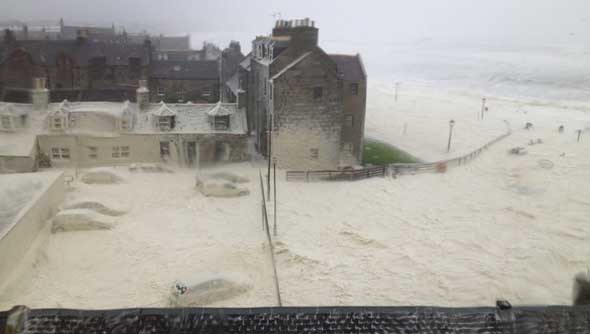The Old Family
and how we got here
This map pretty much defines George Lawrence's life. We don't know definitively where he was born but he was married, lived and died in St Clements Parish, in Catto Square for the last few years, and worked in the chain shop in the works across the road. I doubt if Oranges and Lemons rung out from this church like its namesake in London. The clanging of metal would still be heard though in the Footdee Iron Works across the road from his home in Catto Square. It looks, from the map of the period, as if it wasn't a square but a row set back behind a walled-off patch of grass, a nice attempt at landscaping within the industrial setting. He was a chainmaker and there is a Chain Shop within the works and it doesn't take much imagination to assume this is where he worked. On daughter Mary Ann's marriage record he is listed as a boilermaker and the Boiler Shop is also nearby. On his own marriage record he is the more general designation of blacksmith which is a pointer towards how Mary Ann came to have a child by Thomas Mackay, the son of another Aberdeen blacksmith who lived a quarter of a mile away.
George's birth is not clear-cut. I have a couple of possibilities but can't be certain of either of them and he died before compulsory registration so we don't have his parents on the death record. Dying at the age of 42 could be the result of an accident, environmental poisoning or disease, given his situation. His wife, Christian or Christina Mason or Masson, died two years later, leaving their six children as orphans. Christina's death record in the Church register simply says -
Christina Masson, Infirmary/Poor, aged 40
This does say a lot though in that she was in poverty without her husband's income and probably infirm as a result. Social security payments didn't exist and the Church of Scotland tried its best to look after the poor but I can't see much income from this parish with low-paid workers as parishioners. In 1851, 8-year-old son Matthew is noted as an "Orphant", staying with an 81 year old Parish Pauper, her daughter and neice, an adult lodger and 6 month old "lodger" (no relation), 2 visitors (aged 5 and 2) and another orphan. Can you imagine what that would have been like?
My initial reaction to discovering that Mary Ann was an orphan in 1851 was that the Aberdeen Penitentiary she was in could be simply an orphanage but it definitely wasn't. Being an orphan probably led her into whatever situation got her into the place though.
Christian's father was in the customs at the time of her marriage but had simply been a boatman when she was born, though probably not a fisherman as there seems to be a distinction as shown in her birth record -
David Mason Boatman his Spouse Jane Watson had a daughter born named Christian, baptised by the Rev Mr Thomson, in presence of William Watson Fisher and George Mason Boatman
Footdee, where they all lived, is quite two-faced with two severely contrasting parts. There is the industrial area where they are known to have lived but tucked in a corner at the entrance to the harbour is a quaint little planned village for fishermen and, later, harbour pilots. It is the original Fittie (Footdee is a later Anglified version, where revisionists thought the name came from the Foot of the Dee - it didn't according to old documents and maps), built to replace the huddle of disease-ridden thatched cottages previously there. It is worth a visit to see the neat squares with a shanty town within. Eventually the council banned the building of extra shacks in the central area and now they are used as garden huts and summer-houses and suchlike, each one individualised. The nature of the official and unofficial buildings can be seen on this site.
It can be an interesting place to be when the foam gets whipped up though.
